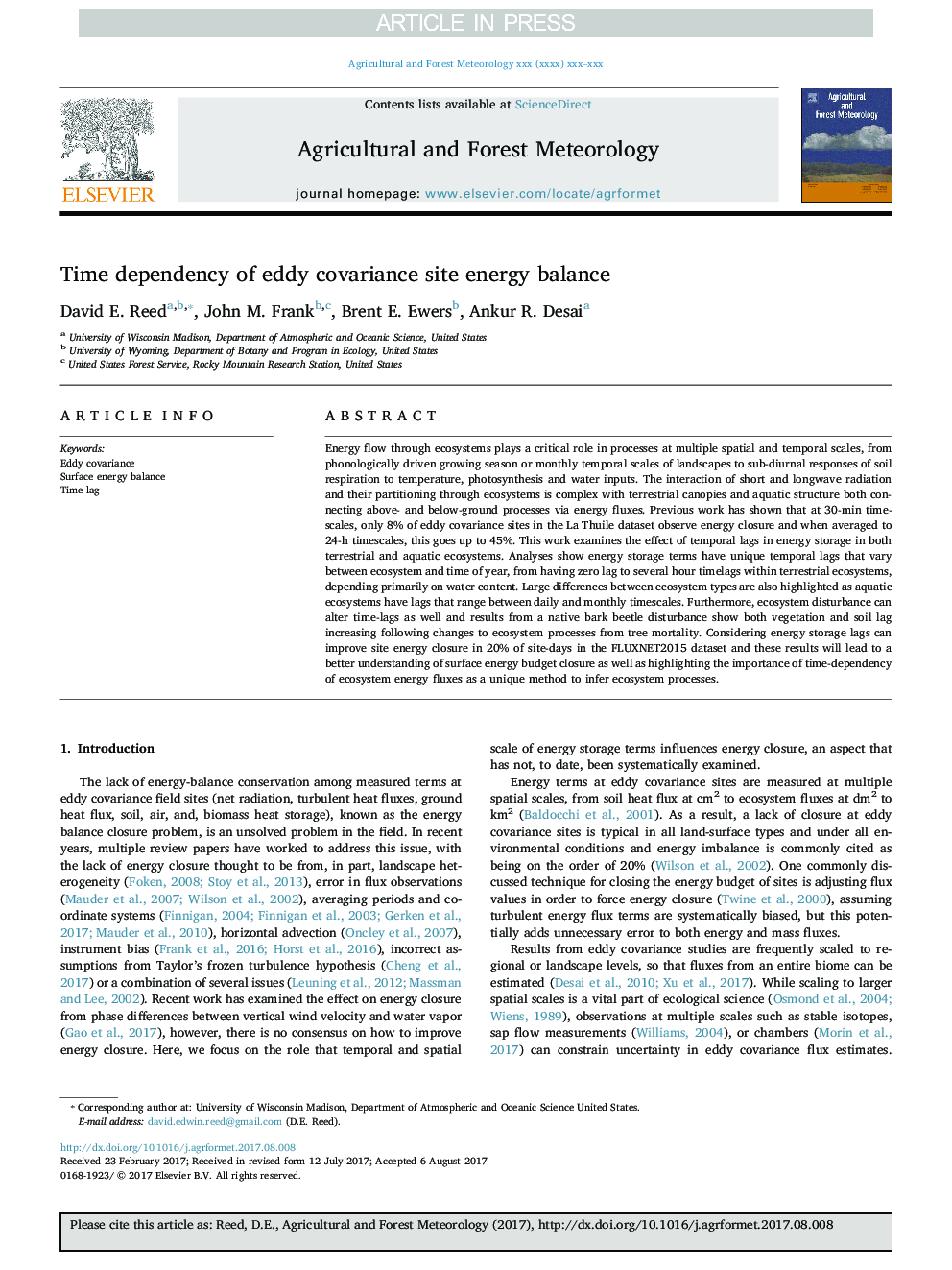| Article ID | Journal | Published Year | Pages | File Type |
|---|---|---|---|---|
| 6536865 | Agricultural and Forest Meteorology | 2018 | 12 Pages |
Abstract
Energy flow through ecosystems plays a critical role in processes at multiple spatial and temporal scales, from phonologically driven growing season or monthly temporal scales of landscapes to sub-diurnal responses of soil respiration to temperature, photosynthesis and water inputs. The interaction of short and longwave radiation and their partitioning through ecosystems is complex with terrestrial canopies and aquatic structure both connecting above- and below-ground processes via energy fluxes. Previous work has shown that at 30-min timescales, only 8% of eddy covariance sites in the La Thuile dataset observe energy closure and when averaged to 24-h timescales, this goes up to 45%. This work examines the effect of temporal lags in energy storage in both terrestrial and aquatic ecosystems. Analyses show energy storage terms have unique temporal lags that vary between ecosystem and time of year, from having zero lag to several hour timelags within terrestrial ecosystems, depending primarily on water content. Large differences between ecosystem types are also highlighted as aquatic ecosystems have lags that range between daily and monthly timescales. Furthermore, ecosystem disturbance can alter time-lags as well and results from a native bark beetle disturbance show both vegetation and soil lag increasing following changes to ecosystem processes from tree mortality. Considering energy storage lags can improve site energy closure in 20% of site-days in the FLUXNET2015 dataset and these results will lead to a better understanding of surface energy budget closure as well as highlighting the importance of time-dependency of ecosystem energy fluxes as a unique method to infer ecosystem processes.
Related Topics
Physical Sciences and Engineering
Earth and Planetary Sciences
Atmospheric Science
Authors
David E. Reed, John M. Frank, Brent E. Ewers, Ankur R. Desai,
